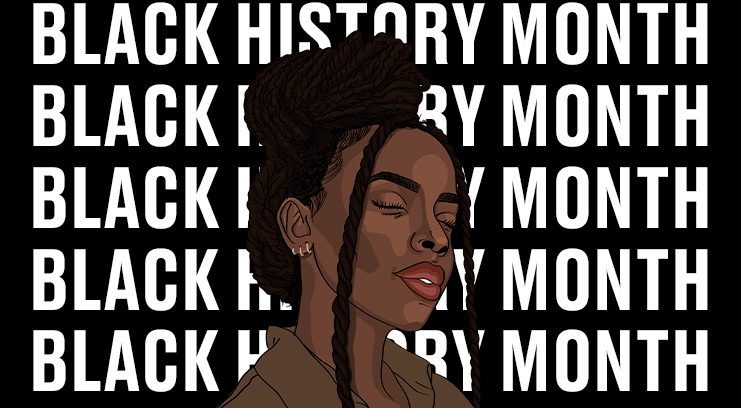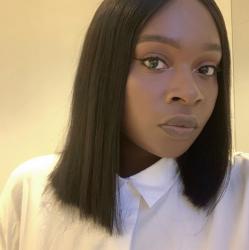With the current influencer culture being the mainstream, it can be so easy to get caught up in the trend and the zeitgeist, and forget about the origins and historical context of trends. While this can be said for pretty much anything today, one area that cultural appropriation has continuously flourished in (and with little to no recognition or appreciation of) is Black culture.
Black society and the intricate DNA that is woven through the fabric of Black culture has had a huge and profound effect on our society globally. From music and business to beauty and fashion, it’s important to learn and appreciate how Black culture has helped shape the current trends of today.
If we take a closer look within the beauty and fashion industry, cultural appreciation has often been replaced with cultural appropriation. By the Oxford definition, cultural appropriation ‘is the unacknowledged or inappropriate adoption of the customs, practices, ideas of one people or society by members of another and typically more dominant people or society.’ Specific examples of this include non-Black individuals wearing braids, cornrows, or locs as hairstyles and passing it off as “just braids” without the acknowledgement of its cultural foundation. An infamous example being when Kim Kardashian passed of her Bo Derek braids as cornrows – her blasé comments completely diminished a style’s worth and heritage.
On an even bigger platform, as the catastrophic events unfolded around George Floyd and the Black Lives Matter Movement earlier this year, brands quickly incorporated the black square or quote of solidarity in support of Black Lives Matter, yet when supporting on a monetary basis fell quiet and melted into the background. In particular, fast fashion brands (who rely heavily on Black influencers and celebrity marketing as well as profiting off of Black culture through styling and imagery) fell short in committing to a change or taking steps further than solidarity. The Black cultural effect is undeniable but what is vital to understand and take away is that cultural appropriation (especially through the cause of deniability or carelessness) dismisses the culture altogether and as we shift gear towards a greater change, it is important to recognise, celebrate and uphold the heritage that trends evolve from, especially when wanting to replicate.
That’s not to say that style and influence can’t be imitated – it just ought to be recognised for its cultural homage. Hair, style, and beauty are huge indicators of black identity, from braids and afros to the ingredients we harness in our skincare routines – each expression holds to a tighter cause that carries through the cultural knots.
Above all, it’s important to remember and appreciate the cultural definition of this modern age through the past. Read on to learn more about Black beauty and the origins of some of its defining features.
The Afro
A recognisable icon within Black beauty, the afro is cherished globally as a style that resists Eurocentric beauty standards (straight hair). As a political action, the afro has been redefined against the once popular descriptions of being ‘woolly’, ‘nappy’ or ‘coarse and brittle’. Thanks to the Black Civil Rights Movement, the Natural Hair Movement, and the Black Is Beautiful Movement as ways to showcase the strength, resilience, and uniqueness of Black hair, the afro has not only become a style that holds up the past but is a symbol for the future, inspiring Black people to embrace their natural hair without prejudice.
Cornrows
Probably one of the most highly discussed hair styles from the standpoint of cultural appropriation (alongside braids) is cornrows. Bound to the scalp, the tight plaits have been styled to either protect natural hair or to lay hair flat under wigs and weaves. With origins dating back as far as 3000 BC, cornrows have evolved through civilisations, with its name and appearance taken from the cornfields where our Black ancestors worked during the slave trade as a way to direct and identify each slave. Cornrows saw a revival in the 1960s and 1970s before adapting to its current form with the 1990s Hip Hop revival.
Braids & Twists
Braiding hairstyles are synonymous with Black beauty trends today but their influence dates back to Africa, around 5000 BC. With styles such as Cleopatra braids (worn by the ruler herself) through to box braids, which celebrated the Mbalantu women in Namibia. Accessorising braids with shells and feathers came from areas of West Africa and communities within Sudan. These more prominently braided hairstyles were considered a form of art, a social symbol that also identified a woman’s culture, tribe, wealth, status, and power.
Headwraps and silk scarfs
Traditionally in Africa wrapping the hair linked to either the social, marital, or economic status of women – depending on how the hair was wrapped. During the slave trade, wraps were forced on Black women to cover their hair out of disgrace and to dehumanise their natural beauty – those that were emancipated by law had to hide their hair. As a rebellion, women often used the opportunity to accessorise their headwraps to stand against the social oppression enforced on them. Head wraps today are now more commonly used to protect the hair at night and even during the day.
Ingredients
Commonly grown through the belt of Africa, ingredients such as shea butter, castor oil, baobab oil and marula oil harness a wealth of benefits for Black hair and skin, and have been incorporated within Black-owned beauty products for centuries. With very rich moisturising properties, many of these ingredients are known to aid skin concerns such as rosacea and eczema. Passed down from generation to generation, through communities and remedies, these natural ingredients remain at the core of Black beauty and wellness, and are increasingly being recognised and celebrated by the global beauty industry.
Image credit: @editedbymissy

